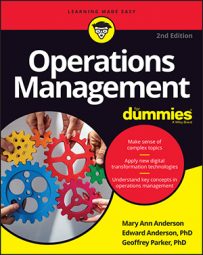Most companies are aware of the bullwhip effect and the damage it can inflict on their business. Yet many managers still fall into the traps that trigger bullwhips. Here are some basic techniques for avoiding the bullwhip effect. These techniques may seem simplistic, but many companies don’t follow them.
Share information
Demand exists at every level of a supply chain, but the only demand that really matters is the end customer’s demand for the final product. Every tier should be aware of the end customer demand (sometimes called pull-through) and not just of the orders placed by its upper tier. Businesses at each tier should also be aware of the pipeline (outstanding) inventory.
Technology systems, such as point-of-sales product scanning and vendor-managed inventory, make sharing these information points fairly painless.
Align your supply chain
Reducing the number of suppliers and the number of tiers in your supply chain can facilitate better communication and decrease the oscillation that creates the bullwhip effect. The restaurant industry has reduced the number of Tier 1 suppliers, which facilitates communications because restaurants have only one supplier they need to communicate with.
Another advantage is that the Tier 1 suppliers may supply many restaurant chains, allowing them to reduce the overall variability they experience in demand. Pharmacies have long benefited from the same structure, with specialized wholesalers (Tier 1 suppliers) that stock medicines and medical devices from all the manufacturers.
Implement an everyday-low-price policy
Promotional sales are a major contributor to the bullwhip effect. To avoid it, successful retailers such as Walmart have adopted the everyday-low-price strategy. If you look at your local Walmart’s weekly advertisement, you may notice that many, if not most, of the products in the ad are listed at their normal prices.
This marketing approach is quite useful. Customers may actually think they’re getting a price discount when they’re not, and Walmart can strategically advertise products they have in excess inventory with the hope that consumers will see the low price and come into the store to purchase the product.
However, the Walmart approach may not work for some products and industries. Recently, one major retailer, suffering from lackluster sales, embarked on an everyday-low-price strategy. Instead of participating in the weekly sales and discount coupons that its competitors use, this retailer started to offer its products at a low fixed price and had monthly special pricing on certain items. Unfortunately, this strategy didn’t have the desired effect. But why?
Most consumers refuse to buy many products unless they’re on sale, and this has an effect on how retailers promote and advertise their products. This appears to be the trend in the fashion retailing and cosmetics industries.
Establish long-term contracts with suppliers
Many successful companies have made their supply chain an integral part of their core business processes. Toyota’s treatment of its supply chain is a major contributor to its success. The best way to embrace your suppliers is to establish long-term relationships with them. This long-term relationship makes the supply chain vested in your success and helps align the goals of both companies.
Lean companies view their suppliers as an extension of their company. One way to embrace the supplier is with long-term contracts based on shared goals and shared performance standards. Long-term purchase contracts give the supplier confidence to invest in long-term improvements, knowing that the revenue stream will be available. To be successful, though, this relationship depends on mutual trust between the buyer and the supplier.
Long-term contracts also make suppliers vested in the contracting company’s success. Most suppliers realize that improvements in their products and processes potentially improve the customer company’s position in the market, increasing sales and leading to increased demand for the supplier’s products.
Improve operational efficiency
The supply chain is only as good as its weakest link. Therefore, improving the processes of your supply chain companies improves your operations.
Improving your processes and your supply processes reduces your delivery lead times and helps reduce the pipeline inventory. The reorder point and desired inventory levels are a direct function of your delivery lead time. As you reduce this lead time, you can reduce the total amount of inventory in your process. Reducing this pipeline inventory lessons the bullwhip effect.

